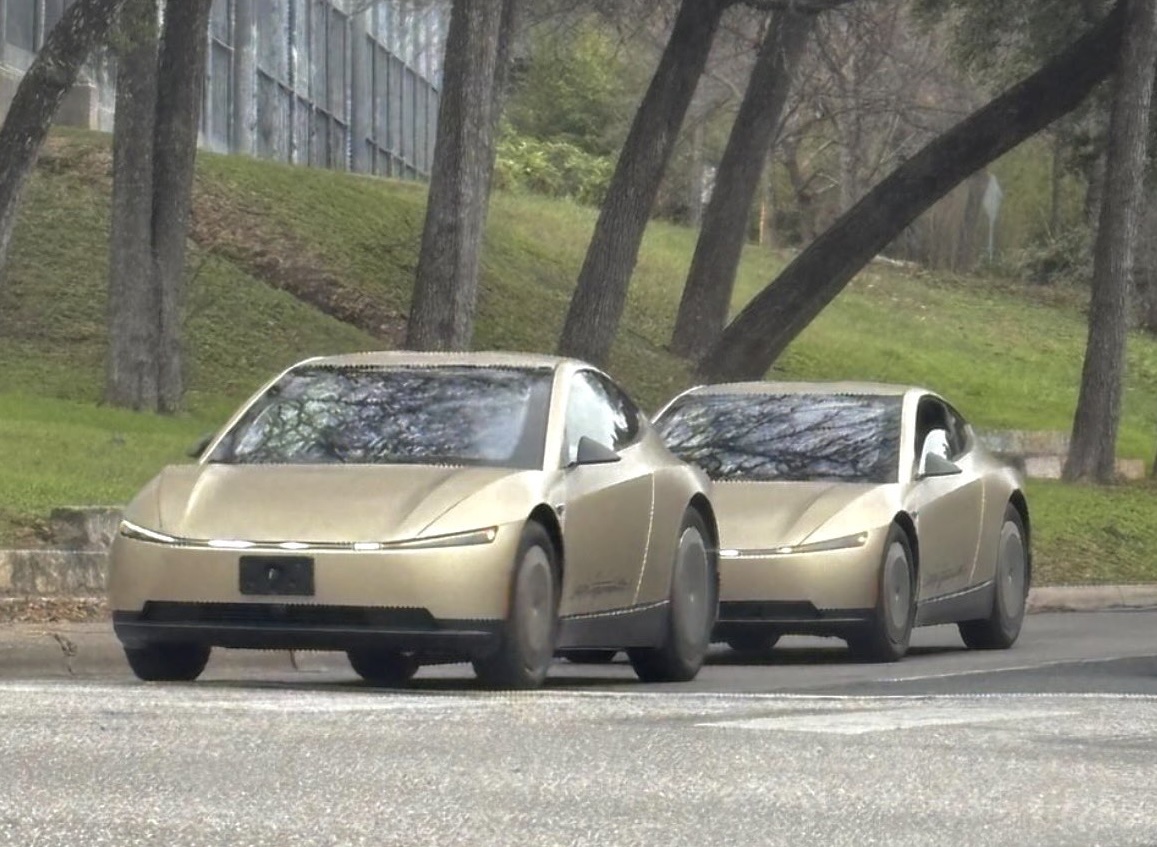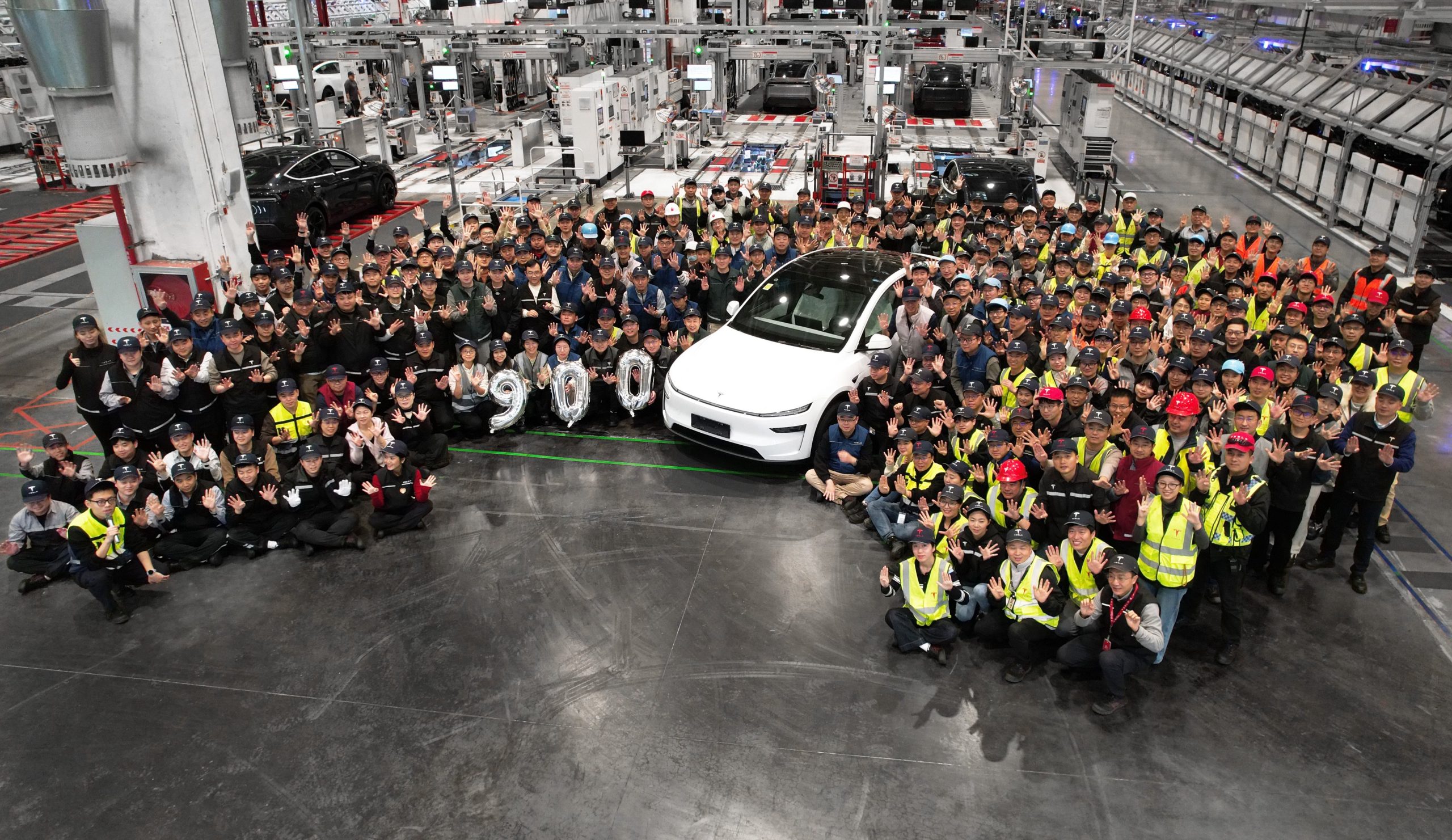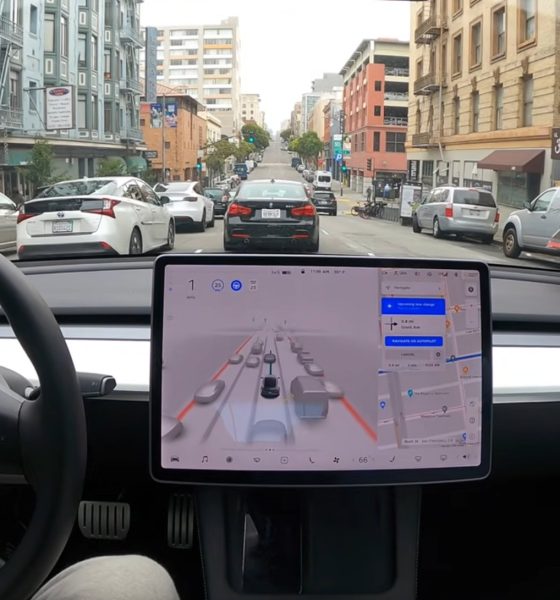It appears that Tesla’s internal beta of FSD Beta 10.13 was successful, as reports recently emerged that the highly-anticipated iteration of the advanced driver-assist system has started rolling out to consumer vehicles. A good portion of the update’s release notes has also been shared online.
As former Tesla AI Director Andrej Karpathy announced his departure from the company last week, CEO Elon Musk remarked that FSD Beta 10.13 should handle some tough left turns. Musk also remarked that the recent 10.x updates of FSD Beta are already “mostly at v11” in terms of their capabilities, though FSD Beta v11 itself should still be released hopefully next month.
Interestingly enough, one of the first observed vehicles that received FSD Beta 10.13 was a Model Y from Gigafactory Texas, a vehicle with a 4680 battery pack. This is quite an interesting development, as FSD Beta and 4680 battery packs are among Tesla’s most important projects in recent years.
Just as stated by Elon Musk, FSD Beta 10.13’s release notes directly reference beta tester Chuck Cook’s extremely challenging unprotected left turn, as well as other notable improvements on false positives and false slowdowns around crosswalks. While FSD Beta 10.13 would most definitely not be the final iteration of the advanced driver-assist system, it promises to be a substantial improvement overall.
Following are (partial) release notes of FSD Beta v10.13.
FSD Beta v10.13 Release Notes
- Improved decision making for unprotected left turns using better estimation of ego’s interaction with other objects through the maneuver.
- Improved stopping pose while yielding for crossing objects at “Chuck Cook style” unprotected left turns by utilizing the median safety regions.
- Made speed profile more comfortable when creeping for visibility, to allow for smoother stops when protecting for potentially occluded objects.
- Enabled creeping for visibility at any intersection where objects might cross ego’s path, regardless of presence of traffic controls.
- Improved lane position error by 5% and lane recall by 12%…
- Improved lane position error of crossing and merging lanes by 22% by adding long-range skip connections and a more powerful trunk to the network architecture.
- Improved pedestrian and bicyclist velocity error by 17%, especially when ego is making a turn, by improving the onboard trajectory estimation used as input to the neural network.
- Improved animal detection recall by 34% and decreased false positives by 8% by doubling the size of the auto-labeled training set.
- Improved detection recall of far away crossing vehicles by 4% by tuning the loss function used during training and improving label quality.
- Improved the “is parked” attribute for vehicles by 5% by adding 20% more examples to the training set.
- Upgraded the occupancy network to detect dynamic objects and improved performance by adding a video module, tuning the loss function, and adding 37k new clips to the training set.
- Reduced false slowdowns around crosswalks by better classification of pedestrians and bicyclists as not intending to interact with ego.
- Reduced false lane changes for cones or blockages by preferring gentle offsetting in-lane where appropriate.
- Improved in-lane positioning on wide residential roads.
- Improved object future path prediction in scenarios with high yaw rate.
- Improved speed limit sign accuracy on digital speed limits by 29%, on signs with difficult relevance by 23%, on 3-digit speeds by 39%, and on speed limit end signs by 62%. Neural network was trained with 84% more examples in the training set and with architectural changes which allocated more compute in the network head.
Don’t hesitate to contact us with news tips. Just send a message to simon@teslarati.com to give us a heads up.

News
Tesla Cybercab is changing the look of Austin’s roads, and it’s not even in production yet
Videos and photos showed the sleek, two-seat autonomous vehicles navigating traffic.

Even before entering production, Tesla’s Cybercab is already transforming the appearance of Austin’s streets, with multiple prototypes spotted testing in downtown areas recently.
Videos and photos showed the sleek, two-seat autonomous vehicles navigating traffic. Interestingly enough, the vehicles were equipped with temporary steering wheels and human safety drivers.
Recent Cybercab sightings
Over the weekend, enthusiasts captured footage of two Cybercabs driving together in central Austin, their futuristic silhouettes standing out amid regular traffic. While the vehicles featured temporary steering wheels and side mirrors for now, they retained their futuristic, production-intent exterior design.
Industry watcher Sawyer Merritt shared one of the vehicles’ videos, noting the increasing frequency of the autonomous two-seater’s sightings.
Previewing the autonomous future
Sightings of the Cybercab have been ramping in several key areas across the United States in recent weeks. Sightings include units at Apple’s Visitor Center in California, the Fremont factory test track, and in Austin’s streets.
The increased activity suggests that Tesla is in overdrive, validating the autonomous two-seater ahead of its planned volume production. Elon Musk confirmed at the 2025 Shareholder Meeting that manufacturing begins around April 2026 with ambitious targets, and during an All-Hands meeting earlier this year, Musk hinted that ultimately, Tesla’s factories should be able to produce one Cybercab every 10 seconds.
News
Tesla celebrates 9 million vehicles produced globally
The achievement, announced by Tesla Asia on X, celebrated not just the Shanghai team’s output but the company’s cumulative production across all its factories worldwide.

Tesla has achieved a new milestone, rolling out its nine millionth vehicle worldwide from Giga Shanghai.
The achievement, announced by Tesla Asia on X, celebrated not just the Shanghai team’s output but the company’s cumulative production across all its factories worldwide. The milestone came as 2025 drew to a close, and it inspired praise from some of the company’s key executives.
Tesla’s 9 million vehicle milestone
The commemorative photo from Tesla Asia featured the Giga Shanghai team assembled on the factory floor, surrounding the milestone Model Y unit, which looked pristine in white. The image was captioned: “Our 9 millionth vehicle globally has just rolled off the production line at Giga Shanghai. Thanks to our owners and supporters around the world.”
Senior Vice President of Automotive Tom Zhu praised Tesla’s factory teams for the remarkable milestone. He also shared his gratitude to Tesla owners for their support. “Congrats to all Tesla factories for this amazing milestone! Thanks to our owners for your continued support!” Zhu wrote in a post on X.
Giga Shanghai’s legacy
Tesla’s nine million vehicle milestone is especially impressive considering that just 207 days ago, the company announced that it had built its eight millionth car globally. The eight millionth Tesla, a red Model Y, was built in Giga Berlin. The fact that Tesla was able to build a million cars in less than seven months is quite an accomplishment.
Giga Shanghai, Tesla’s largest factory by volume, has been instrumental to the company’s overall operations, having reached four million cumulative vehicles earlier in 2025. The plant produces Model 3 and Model Y for both domestic Chinese and export markets, making it the company’s primary vehicle export hub.
News
Tesla officially publishes Q4 2025 vehicle delivery consensus
By releasing these numbers directly, Tesla establishes a clear, transparent benchmark ahead of its actual results.

Tesla has taken the rather unusual step of officially publishing its company-compiled Q4 2025 delivery consensus on the Investor Relations site. As per analyst estimates, Tesla is expected to deliver 422,850 vehicles and deploy 13.4 GWh of battery storage systems this Q4 2025.
By releasing these numbers directly, Tesla establishes a clear, transparent benchmark ahead of its actual results, making it harder for narratives to claim a “miss” based on outlier estimates.
Official consensus sets the record straight
Tesla’s IR press release detailed the consensus from 20 analysts for vehicle deliveries and 16 analysts for energy deployments. As per the release, full-year 2025 consensus delivery estimates come in at 1,640,752 vehicles, an 8.3% decline from 2025’s FY deliveries of 1,789,226 cars.
Tesla noted that while it “does not endorse any information, recommendations or conclusions made by the analysts,” its press release does provide a notable reference point. Analysts contributing to the company compiled consensus include Daiwa, DB, Wedbush, Oppenheimer, Canaccord, Baird, Wolfe, Exane, Goldman Sachs, RBC, Evercore ISI, Barclays, Wells Fargo, Morgan Stanley, UBS, Jefferies, Needham, HSBC, Cantor Fitzgerald, and William Blair.

Tesla’s busy Q4 2025
Tesla seems to be pushing hard to deliver as many vehicles as possible before the end of 2025, despite the company’s future seemingly being determined not by vehicle deliveries, but FSD and Optimus’ rollout and ramp. Still, reports from countries such as China are optimistic, with posts on social media hinting that Tesla’s delivery centers in the country are appearing packed as the final weeks of 2025 unfold.
The Tesla Model Y and Model 3 are also still performing well in China’s premium EV segment. Based on data from January to November, the Model Y took China’s number one spot in the RMB 200,000-RMB 300,000 segment for electric vehicles, selling 359,463 units. The Model 3 sedan took third place, selling 172,392. This is quite impressive considering that both the Model Y and Model 3 command a premium compared to their domestic rivals.










